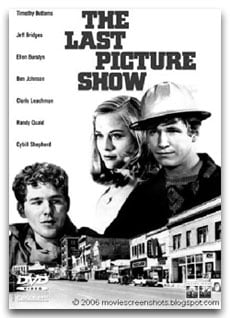Critics’ Notebook
Marfa Highlights
Last year was a good one for movies with a West Texas twang. The 2008 Academy Awards saw the Coen Brothers’ West Texas eulogy No Country for Old Men take home statues for best picture, best director, best adapted screenplay, and best supporting actor, while P.T. Anderson’s American gothic There Will Be Blood, shot in Marfa, won in the best actor and best cinematography categories. Not since Elizabeth Taylor arrived at Giant‘s Reata Ranch in 1956 had West Texas and Hollywood been so much in love.

Then there was May’s inaugural Marfa Film Festival. From its opening-night outdoor screening of There Will Be Blood to the closing-night presentation of The Last Movie, Dennis Hopper’s rarely seen and nearly incoherent 1971 “allegory concerning the destruction of innocence,” the festival dovetailed perfectly with the aesthetic ethos of a tiny desert town that prides itself as a geographical and cultural anomaly.
This year’s festival, running April 29 to May 3, promises a resonant reprise. In addition to more than 50 new features, documentaries, shorts, animations and experimental movies, this year’s festival will pay tribute to its regional legacy with a screening of The Last Picture Show, Peter Bogdanovich’s new wave adaptation of Larry McMurtry’s elegy to small-town Texas life. McMurtry will introduce the movie that put West Texas back on Hollywood’s map after years of post-Giant calm and made Cybill Shepherd a star.
Though the man who wrote Lonesome Dove is free to go anywhere in West Texas he pleases, I think at this point it’s safe to say that Picture Show needs no introduction. See www.marfafilmfestival.org for info.
Southern Exposures
For my money, the best movies of the last decade have come from Latin America. While independent directors in the U.S. have satisfied their desire for quirk with ironic, unassuming character studies and exercises in set design, Latin American filmmakers have taken their cue from late-1960s Italy and created a cinematic language boiling with loud, intrusive, exhilarating life. While our films often creep into viewers’ minds sideways, theirs grab us by the neck and shake with vigor. Nothing the United States has produced in the last 10 years can match Y Tu Mama Tambien, City of God, or Amorres Perros for sheer energy.

Not every Latin American film garners the attention paid to Y Tu Mama Tambien; even a conservative estimate would have to conclude that 99 percent of Latin American films go unnoticed by U.S. audiences. For 12 years, Austin’s Cine Las Americas International Film Festival has been trying to remedy this situation, giving Texans their first, and perhaps only, opportunity to see films from Central and South America on the big screen. Without it, Austin audiences might never get a glimpse of what filmmaking in El Salvador or Bolivia or Ecuador is all about.
This year Cine Las Americas initiates its “guest country program,” screening prominent films from a particular Latin American country. The inaugural program highlights Chile, focusing on films produced during that country’s 1994-2004 post-dictatorship period, when the population was coming to cultural terms with the atrocities of the Pinochet era. Featured movies include Gonzalo Justiniano’s controversial post-Pinochet drama Amnesia, Silvio Caiozz’s multiple-award-winning Coronacion, and Boris Quercia’s 2003 parody Sexo Con Amor, about a group of parents whose erotic confusion prevents them from developing a rational sex-education curriculum for their fourth-grade children. The resulting mess suggests what can happen when issues of importance, like sex and governance, are left in the hands of adults-a topic Texas audiences should relate to just fine. For tickets and info, see www.cinelasamericas.org


